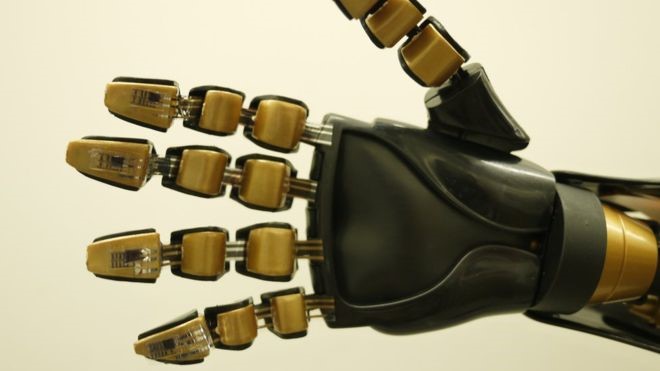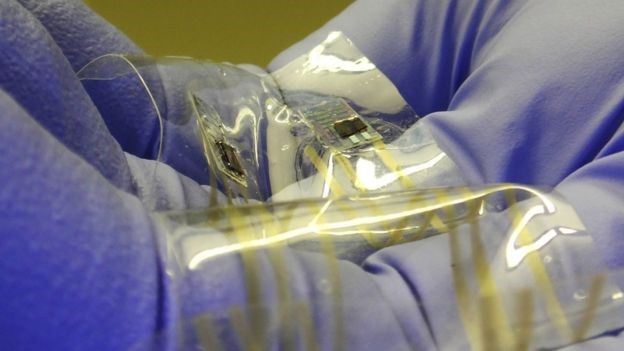
A recent development in touch sensor technology brings us one step closer to the cyberpunk world depicted in William Gibson’s Neuromancer , a world in which cybernetic augmentation is a common solution to biological shortfall. Taking the form of digital skin whose function closely resembles real skin — it detects touch and produces progressively faster electrical pulses as pressure is increase — scientists from Stanford University have successfully used these pulses to stimulate neuronal activity in a slice of mouse brain.
Though nascent, the technology may serve as a match-maker for the inevitable marriage between biology and technology, leading to the creation of responsive prosthetics. The main advantage the flexible plastic-based digital skin has over its predecessors is that its sensors produce signals that make sense to the nervous system, a feat which completely eliminates the need for an outside processor or computer to “translate” the touch information for the brain to understand.
“Our sensor is now coupled with a printed, simple electronic circuit. That circuit allows our sensor to generate electrical pulses that can communicate with the brain,” said Prof Zhenan Bao, a chemical engineer at Stanford University. “They are very thin and flexible, and are also stretchy. So you could mount a sensor on your skin and use it to detect vital signs like heartbeat and blood pressure.”

The technology’s primary enabler is the layer of flexible, rubbery polymer, that’s laced with carbon nanotubes and shaped into tiny pyramids. When pressure is applied, the pyramids are deformed and the top becomes flat, changing the amount of current that flows through the pyramids, and thus creating a pressure read-out. Beneath this sits the inkjet-printed oscillator that’s responsible for translating the variable current into an array of pulses.
Professor Bao and her team demonstrate the technology could reliably communicate with the nervous system by relaying it to a blue LED and shining it on a section of mouse brain to activate the underlying neurons using a technique called optogenetics. Optogenetics is a light-based technique used by neurologists to activate and control cells in the brain using photons.
The illuminated cells were genetically modified to respond to this type of stimulation by expressing light-sensitive ion channels when coming into contact with the photons from the blue LED. Next, when team measured the impulses of individual cells within that section of brain, they observed that a clear readout of the pulses produced by the touch sensor.
Bao and her team opted for the optogenetic approach of delivering signals because it refrains from directly contacting the neurons, whereas delivering electricity directly to the cells using electrodes could potential damage the cells.
She remains hopeful that advancements in stem cell technology may eventually yield an optogenetic interface for technology such as the sensors developed by her team.
Source: BBC
Advertisement
Learn more about Electronic Products Magazine





